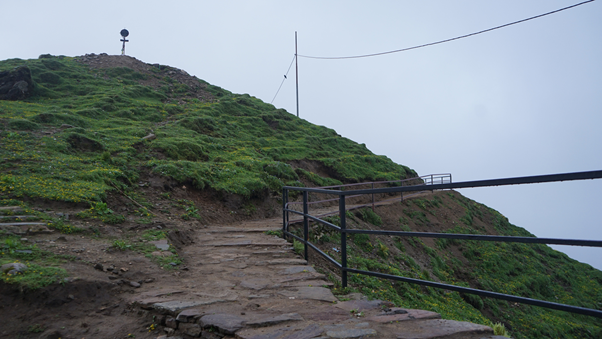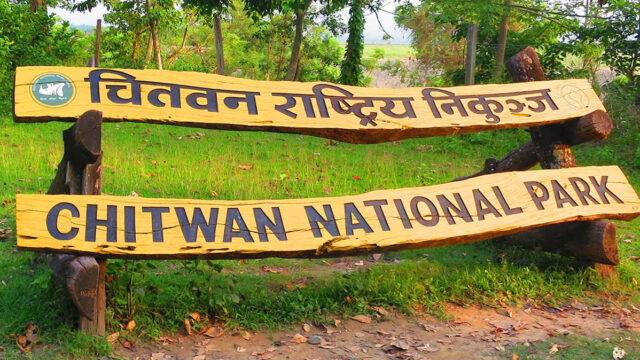In a major initiative to promote sustainable tourism in one of Nepal’s emerging destinations, the Khopra Danda (also known as Khopralek), located at an altitude of 3,600 meters in Annapurna Rural Municipality–5, has seen the construction of new tourism-friendly infrastructure. These include a new shelter, foot trail, public toilets, and safe drinking water facilities, all aimed at enhancing the experience of domestic and international visitors.
The project was executed through the Tourism and Industry Office of Myagdi with a budget of NPR 2 million allocated by the Gandaki Provincial Government. According to office chief Amrit Kandel, the Khopra Tourism Infrastructure Plan was implemented through a local consumer committee to ensure community involvement and sustainability.
Facilities Constructed to Meet Growing Tourist Demand
With increasing interest among tourists, particularly internal travelers, Khopra has emerged as a preferred alternative destination along the Annapurna Circuit. To accommodate this growing demand, a shelter capable of hosting 150 people has been constructed. Additionally, two public toilets have been built for hygiene and sanitation, and a 500-meter-long stone-paved foot trail has been established along the steep section of the Khopra-to-Bayeli route.
Kandel further added that a 60-meter stretch of the foot trail has been secured with iron railings to ensure safety on slippery or dangerous slopes. The water system has also been upgraded by burying an existing 1,800-meter pipeline underground, which was initially laid last year, to protect it from environmental damage.
Community Labor and Involvement
Executing construction in a remote high-altitude location like Khopra comes with significant logistical challenges. Due to the distance from the nearest village, 28 local laborers from Paudwar village lived and worked at the site continuously for 45 days to complete the infrastructure. Consumer committee chair Hari Prasad Tilija explained that early morning and late evening work was necessary due to cold temperatures and time constraints.
This is not the first time the provincial government has invested in Khopra. Last year, it provided a budget of NPR 1.2 million to build preliminary infrastructure. However, with the steady rise in footfall, especially from internal tourists seeking serene mountain experiences, there was a strong demand for improved facilities, prompting further investment.
Ecological and Scenic Significance of Khopra
Khopra is a pristine location within the Annapurna Conservation Area Project (ACAP) and is recognized for its ecological richness. Located in the midst of rhododendron forests, this ridge offers a spectacular viewpoint for iconic Himalayan peaks such as Annapurna, Dhaulagiri, Nilgiri, and Gurja Himal. In addition to snow-covered mountains, visitors can enjoy sunrises, sunsets, alpine landscapes, forests, wildlife, yak pastures, lakes, and waterfalls.
Originally a quiet detour from the Annapurna Circuit, Khopra has grown in popularity due to its tranquility, biodiversity, and panoramic mountain views, making it a compelling stop for trekkers looking to extend their travel duration off the main trail. The area’s promotion as a sustainable and community-based trekking destination has made it an example of eco-tourism development in Nepal.
Community-Operated Lodges and Sustainable Tourism
The Khopra community-based lodge, operated by a tourism cooperative, had previously faced capacity issues during peak tourist seasons. In response, a new shelter building has been constructed to supplement the accommodation needs of visitors. Rajesh Tilija Pun, Ward Chairperson of Annapurna Rural Municipality–5, informed that the expansion of lodging capacity was crucial, particularly as internal tourists increasingly favor Khopra for its accessible adventure and cultural significance.
Tilija also noted that the local government’s focus is on developing Khopra not just as a stopover, but as an independent tourism destination that promotes longer stays, cultural exchange, and community benefits.
A Model for High-Altitude Rural Tourism
Khopra represents a success story in rural tourism development where local communities, provincial authorities, and tourism offices have come together to create infrastructure that balances development and conservation. The area is now considered a model for how off-the-beaten-path destinations can contribute to Nepal’s broader tourism economy while empowering local communities.
Plans are underway to further upgrade services such as eco-friendly transportation, better connectivity, and digital promotion of the site to attract more tourists without harming the fragile mountain ecosystem.






